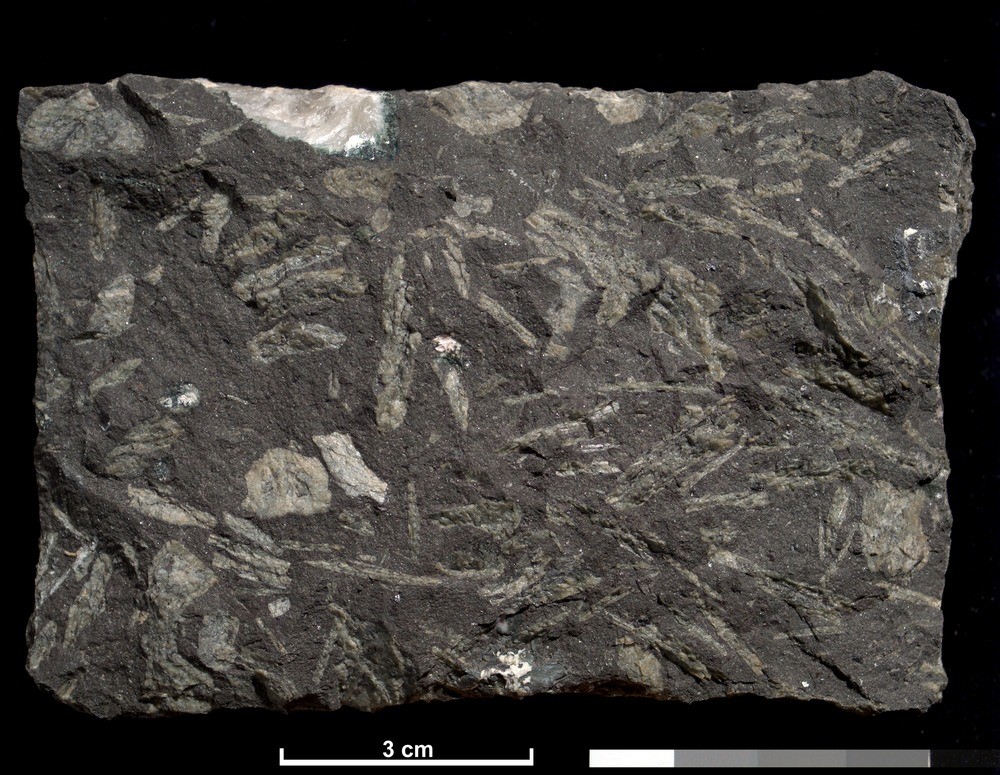| P number: | P521330 |
|---|---|
| Caption: | Rock specimen of basalt. Quarry, south-east side of Carnethy, Pentland Hills, Edinburgh, Scotland. |
| Description: | The sample is a superb example of a typical dark, fine-grained basaltic rock, containing large pale feldspar phenocrysts. The pinkish-white area on the top edge of the sample is a large calcite amygdale, indicating that the basalt was originally vesicular. The feldspar phenocrysts show a range of morphologies, from equant (roughly square), to lath-like (elongate-rectangular), and becoming acicular (needle-like in shape). British Geological Survey Petrology Collection sample number EMC2434. Basalts are found all over the world. Some of the best known basalt outpourings are in the USA, Iceland, India and Brazil. The lavas known as the Deccan Traps in India cover an area of more than 500,000 square kilometres and a total thickness of more than 1000 metres. This is an example of a phenomenon known as flood or plateau basalts built up by large numbers of thin lava flows which are of vast lateral extent, erupted through fissures and fed by dykes. Such eruptions are occurring at the present day in Iceland. The basalt is from the Carnethy and Hillend Group of volcanic rocks, one of ten distinct Lower Old Red Sandstone (Devonian) age groups of volcanic rocks in the Pentlands. The Pentlands together with the Braid Hills and Blackford Hill exhibit the thickest most continuous and most varied sequence of lavas in the whole of the southern Midland Valley. |
| Date taken: | Sun Dec 01 00:00:00 GMT 2002 |
| Photographer: | McTaggart, F.I. |
| Associate: | T.S. Bain |
| Copyright statement: | NERC |
| Additional information: | EMC2434 |
| Orientation: | Landscape |
| Size: | 293.37 KB; 1000 x 775 pixels; 85 x 66 mm (print at 300 DPI); 265 x 205 mm (screen at 96 DPI); |
| Average Rating: | Not yet rated |
| Categories: | Best of BGS Images/ Geological structures |
Reviews
There is currently no feedback

